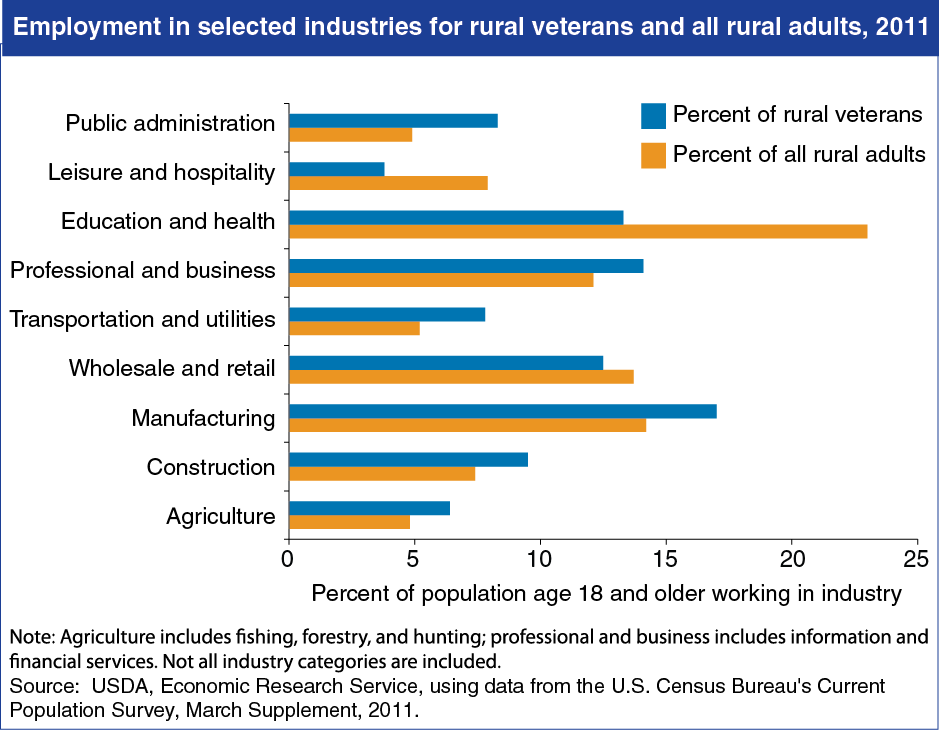Rural veterans work in higher-paying industries
- by Economic Research Service
- 11/8/2013

Employment challenges facing recent military veterans are similar to those faced by all new civilian labor force entrants. In addition to these challenges, veterans also face higher rates of disability. The practical skills recent veterans have acquired are often superior to those of their nonveteran peers. As a result, the positive economic impacts veterans are likely making in rural America once they find work and start their careers can be seen in employment differences by industry. Rural veterans were more likely than rural nonveterans to be employed in higher-skilled, higher-paying industries in 2011, including manufacturing and professional and business services. While lower-paying industries such as education and health services, and leisure and hospitality (hotels, restaurants, etc.) employed over 30 percent of rural nonveteran workers in 2011, only 17 percent of rural veterans worked in these service industries. Just over 6 percent of rural veterans worked in agriculture (including fishing, forestry, and hunting). This chart is found in the ERS report Rural Veterans At A Glance, EB-25, November 2013.


